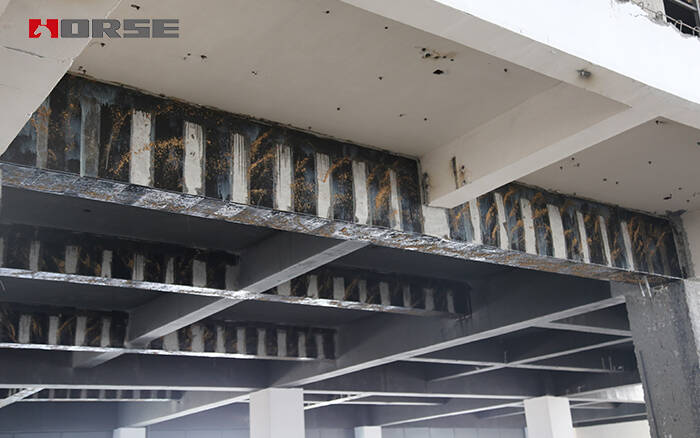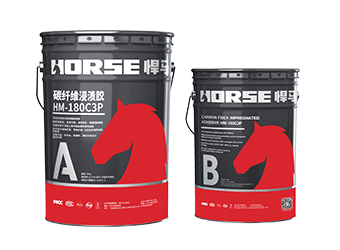Solutions
Horse Construction offers full range of structural strengthening materials with technical supports, documentation supports, products supports, project supports.
Carbon fiber reinforced polymer(CFRP) technology is widely used. It is suitable for the reinforcement and repair of various structural types and various structural parts, such as beams, plates, columns, roof frames, bridge piers, bridges, cylinders and shells, which require that the strength grade of the concrete at the base level is not less than C15.

Carbon fiber reinforced polymer(CFRP) technology is widely used. It is suitable for the reinforcement and repair of various structural types and various structural parts, such as beams, plates, columns, roof frames, bridge piers, bridges, cylinders and shells, which require that the strength grade of the concrete at the base level is not less than C15. This paper focuses on the mechanism of CFRP strengthening the flexural, shear and aseismic members of reinforced concrete.

1. Carbon fiber reinforced concrete flexural members.
The flexural reinforcement of reinforced concrete flexural members is to replace or supplement the tensile properties of the reinforced bar by sticking CFRP to the tensile zone of the component, thus improving the flexural capacity of the member. After the carbon fiber is pasted, the strain of carbon fiber is very small before the concrete cracking in the tensile zone of the component. After the cracking of the concrete, the carbon fiber cloth gradually participates in the joint work, and the strain increases faster. After the steel bars yield, the carbon fiber cloth plays a full role and the strain increases rapidly, and its high strength and efficiency can be fully reflected.
2. Carbon fiber reinforced concrete shear component.
The shear reinforcement of reinforced concrete is the bonding of carbon fiber to the shear area of the component, where the effect of carbon fiber is similar to that of stirrups. Before the yield of the component, the strain development of carbon fiber is slow and the maximum strain value is smaller. After the yield of the component, the effect of the stirrup is gradually replaced by carbon fiber, the strain development of the carbon fiber is quicker, the strain value is higher than the strain value of the stirrup, and the confinement of the stirrup is reduced, and the strain development is slow.
3. Carbon fiber reinforced concrete aseismic columns.
The seismic strengthening of concrete columns with carbon fiber is achieved by increasing the ductility of the concrete columns with CFRP. The main function of carbon fiber is to restrain the internal concrete. This constraint is a passive constraint. With the increase of the axial pressure of the concrete column, the lateral expansion causes the circumferential elongation of the CFRP to increase the lateral binding force. The constraint mechanism depends on two factors: the lateral expansion property of concrete and the circumferential restraint capacity of CFRP.
CFRP confined concrete shows two stages of stress:
In the first stage, the concrete is in the linear elastic phase of similar plain concrete, and the transverse deformation is small, so the transverse deformation of carbon fiber is very small, and the boundary is near the peak stress of the plain concrete.
In the second stage, after the ultimate bearing capacity is reached, the lateral expansion and deformation of concrete increases sharply, the cyclic strain of carbon fiber increases significantly, the circumferential binding force increases, and the ultimate pressure of concrete should be improved. As a result, the crushing of concrete in the compression area is postponed, and the plastic deformation performance of longitudinal reinforcement is fully realized, and the ductility of components is significantly improved.
You can find anything here you are in need of, have a trust trying on these products, you will find the big difference after that.

High strength, unidirectional carbon fiber wrap pre-saturated to form a carbon fiber reinforced polymer (CFRP) wrap used to strengthen structural concrete elements.

Good thixotropy carbon fiber leveling adhesive for concrete surface repairing

Good impregnation carbon fiber adhesive for applying carbon fiber reinforced polymer(CFRP) wrap for structural strengthening